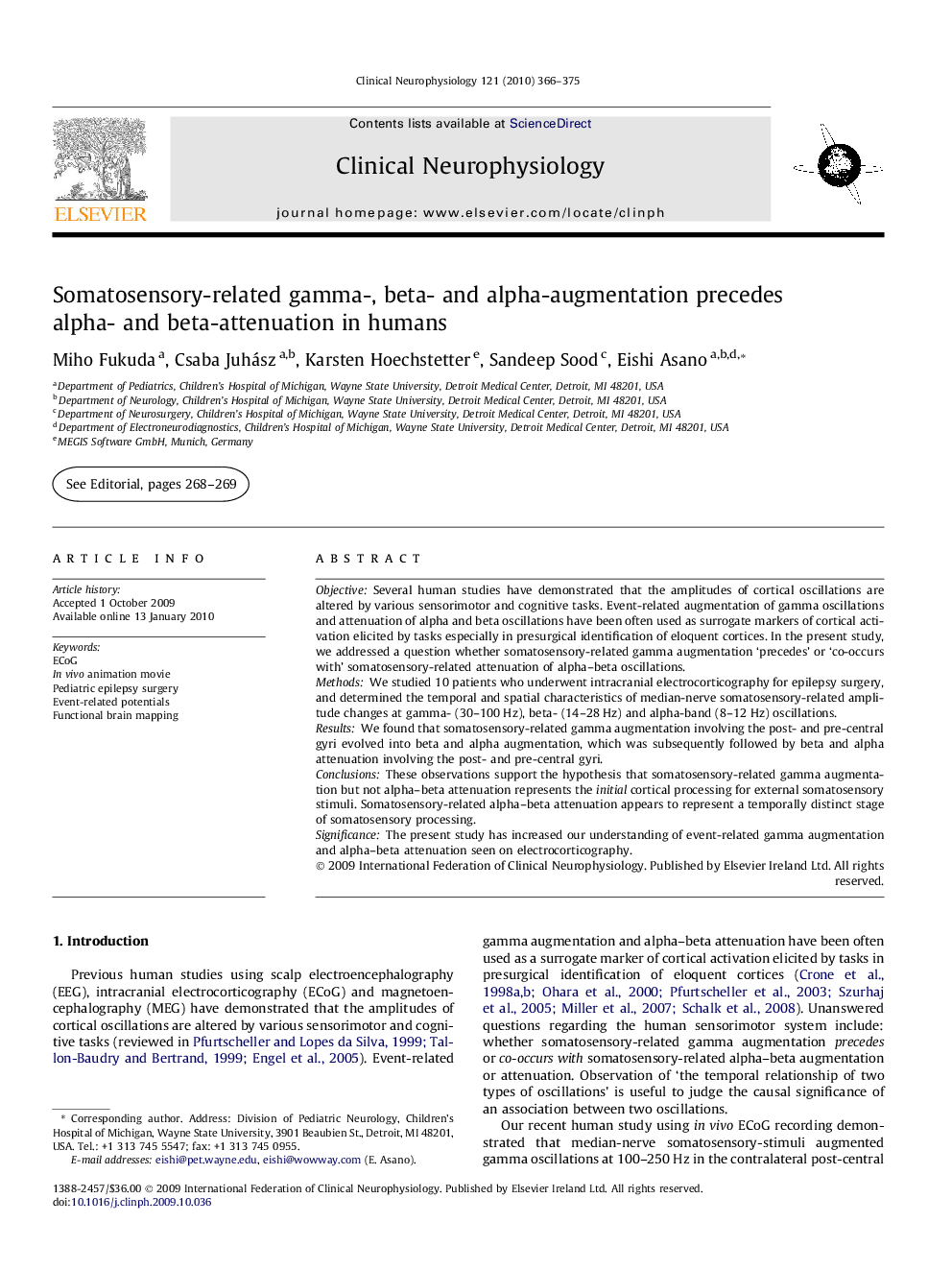| Article ID | Journal | Published Year | Pages | File Type |
|---|---|---|---|---|
| 3045152 | Clinical Neurophysiology | 2010 | 10 Pages |
ObjectiveSeveral human studies have demonstrated that the amplitudes of cortical oscillations are altered by various sensorimotor and cognitive tasks. Event-related augmentation of gamma oscillations and attenuation of alpha and beta oscillations have been often used as surrogate markers of cortical activation elicited by tasks especially in presurgical identification of eloquent cortices. In the present study, we addressed a question whether somatosensory-related gamma augmentation ‘precedes’ or ‘co-occurs with’ somatosensory-related attenuation of alpha–beta oscillations.MethodsWe studied 10 patients who underwent intracranial electrocorticography for epilepsy surgery, and determined the temporal and spatial characteristics of median-nerve somatosensory-related amplitude changes at gamma- (30–100 Hz), beta- (14–28 Hz) and alpha-band (8–12 Hz) oscillations.ResultsWe found that somatosensory-related gamma augmentation involving the post- and pre-central gyri evolved into beta and alpha augmentation, which was subsequently followed by beta and alpha attenuation involving the post- and pre-central gyri.ConclusionsThese observations support the hypothesis that somatosensory-related gamma augmentation but not alpha–beta attenuation represents the initial cortical processing for external somatosensory stimuli. Somatosensory-related alpha–beta attenuation appears to represent a temporally distinct stage of somatosensory processing.SignificanceThe present study has increased our understanding of event-related gamma augmentation and alpha–beta attenuation seen on electrocorticography.
